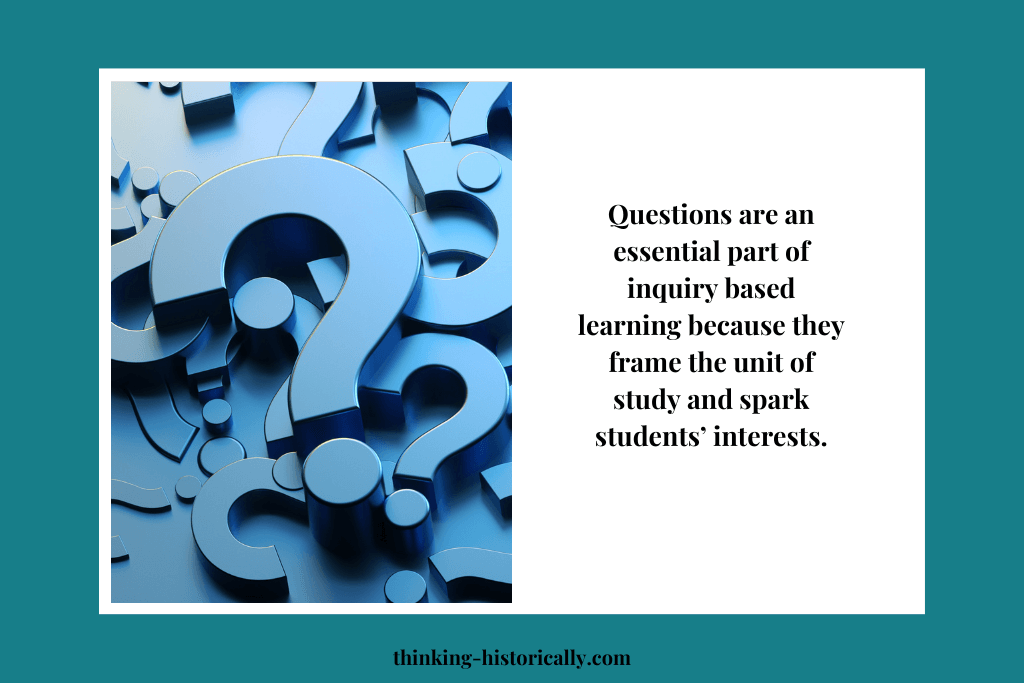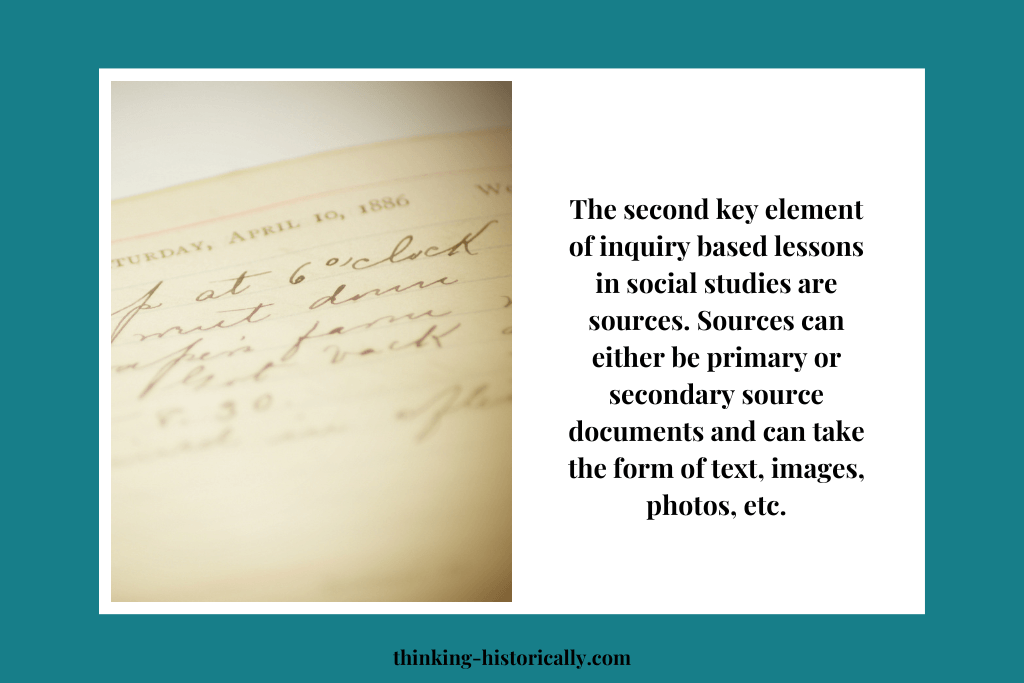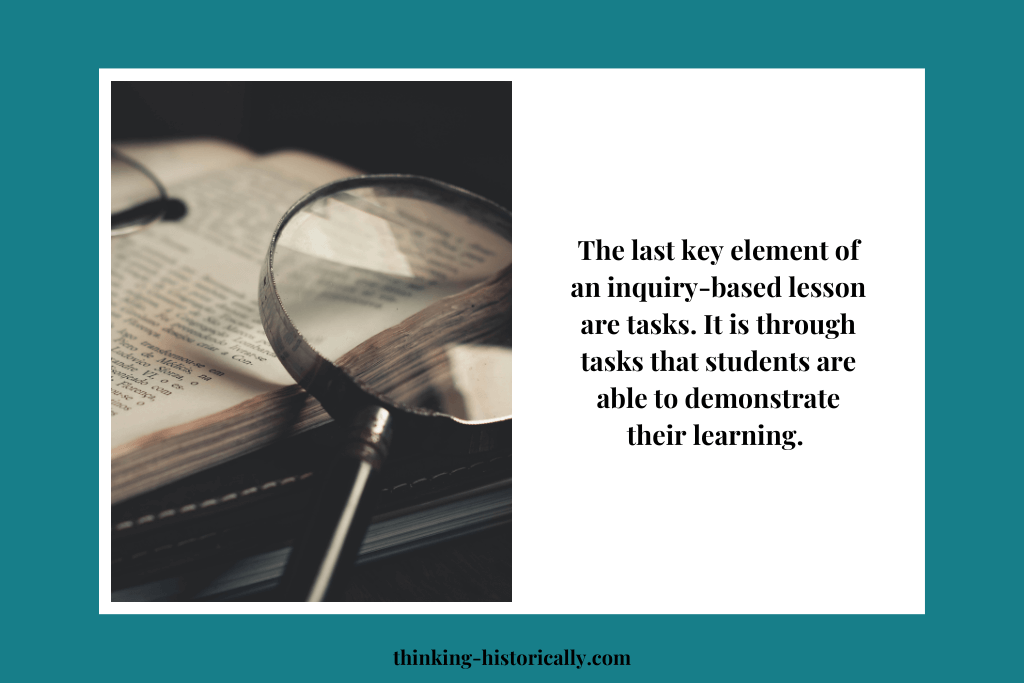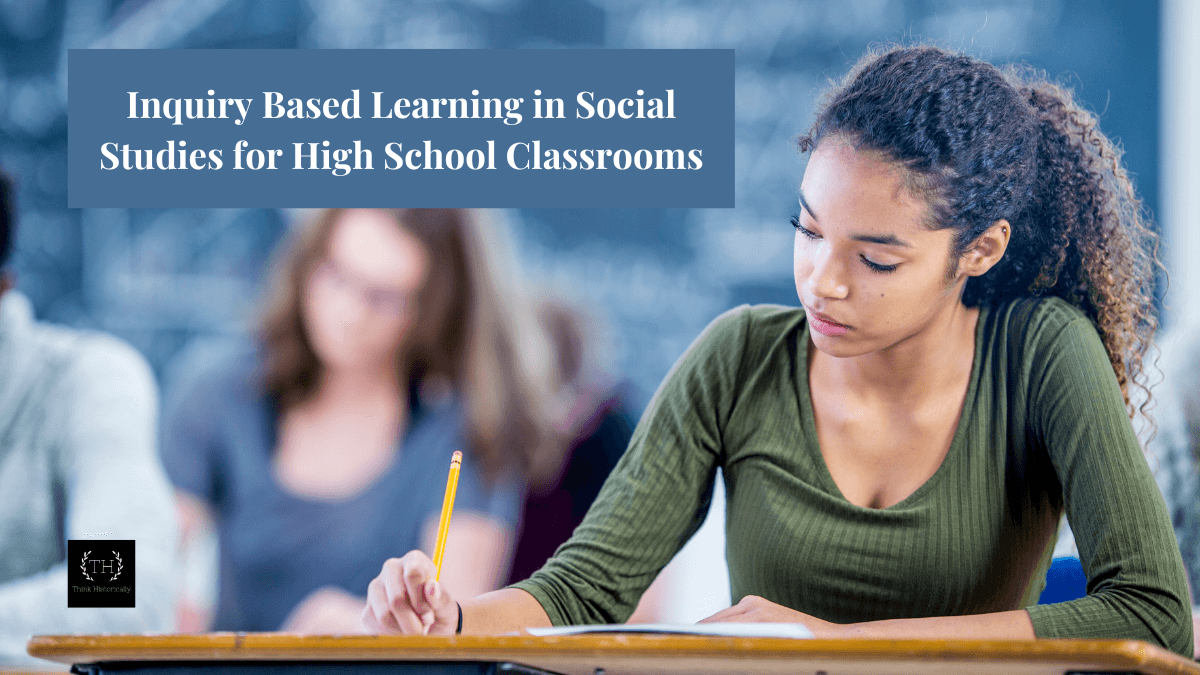Have you ever had one of those days where you felt like your students weren’t at all interested in your lesson? Have you wondered what you could do to spark their interest and make them excited about your history class? Well, look no further! A great way to get students engaged in content is through inquiry based learning in social studies! Inquiry based learning is an approach to teaching that uses questions to frame the unit of study and capture students’ curiosity as they investigate a time period, event, or topic! Through social science inquiry students uncover information and come to their own conclusions.
If you’re interested in learning how to create your own social studies inquiry lessons, you can sign up for a free step-by-step guide to creating an engaging inquiry based social studies lessons!
I know what it feels like to have students not interested in your lesson that you spent countless hours scrambling together. It’s not a great feeling, I know. I would go home and wonder, what can I do differently? How can I get my students interested in the lesson? There is a way and that is through inquiry based teaching!
What Is Inquiry Based Learning In Social Studies?

You might be wondering, “What is learning through inquiry in social studies?” Inquiry based learning is a method of teaching that gives students an opportunity to explore content through questions and document analysis. In traditional history classrooms, students are given information and are tasked with memorizing facts. In contrast, in classrooms that implement inquiry based learning teachers guide students to come to their own conclusions. How do teachers guide students to their own conclusions? Through questions! Questions are an essential part of inquiry based learning because they frame the unit of study and spark students’ interests.
Questions are a key element to creating inquiry based lessons. When students hear an intriguing question, they are naturally compelled to want to answer the question. In inquiry based lessons, there are two types of questions. The first type of question is the main compelling question that frames the unit of study. The second type of question are supporting questions. Supporting questions are questions that lead up to the main question. Supporting questions break the unit into manageable chunks and scaffold the learning. The key elements of inquiry based lessons are questions, sources, and tasks.
Social Studies Inquiry Lessons – Sources
As previously mentioned, questions are used to guide student learning and catch students’ interest. You might be wondering, “but how do students actually make conclusions about the questions they are presented with?” The answer is through sources! The second key element of inquiry based lessons in social studies are sources. Sources can be either primary or secondary source documents and can take the form of text, pictures, images, photos, etc. Sources are a great way to engage students because it is an opportunity to provide students with documents beyond that textbook and give them multiple perspectives. For instance, in an inquiry based lesson on the Second Industrial Revolution, students can read diary or journal entries of factory workers.

Inquiry Lesson Key Element – Tasks
The last key element of an inquiry-based lesson are tasks. It is through tasks that students are able to demonstrate their learning. Tasks provide students with an opportunity to articulate their conclusions using evidence from sources to support their arguments. In an inquiry based lesson, students complete formative tasks for each supporting question, before completing a summative assessment that answers the main compelling questions. The formative tasks prepare students to take a stance regarding the main compelling question. Students use argumentative and analytical skills to make claims and back up their claims using evidence that they’ve gathered from sources. To read more about inquiry based learning in social studies, read this article.

If you’re interested, sign up for the a step-by-step guide that will help you create your own inquiry based lessons!

Teaching social studies doesn’t have to include mundane tasks for your students to complete. Your students will take ownership of their learning through inquiry based learning in social studies and enjoy the process! If you’re interested in checking out other inquiry based lessons and teaching resources, check out my TPT store.


2 Responses